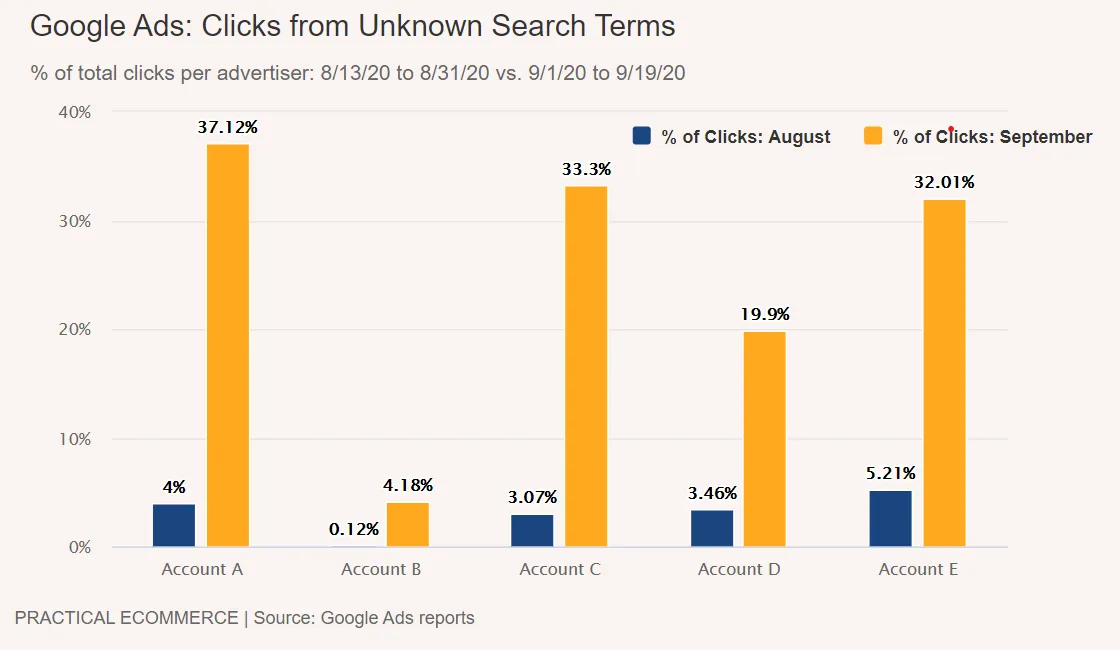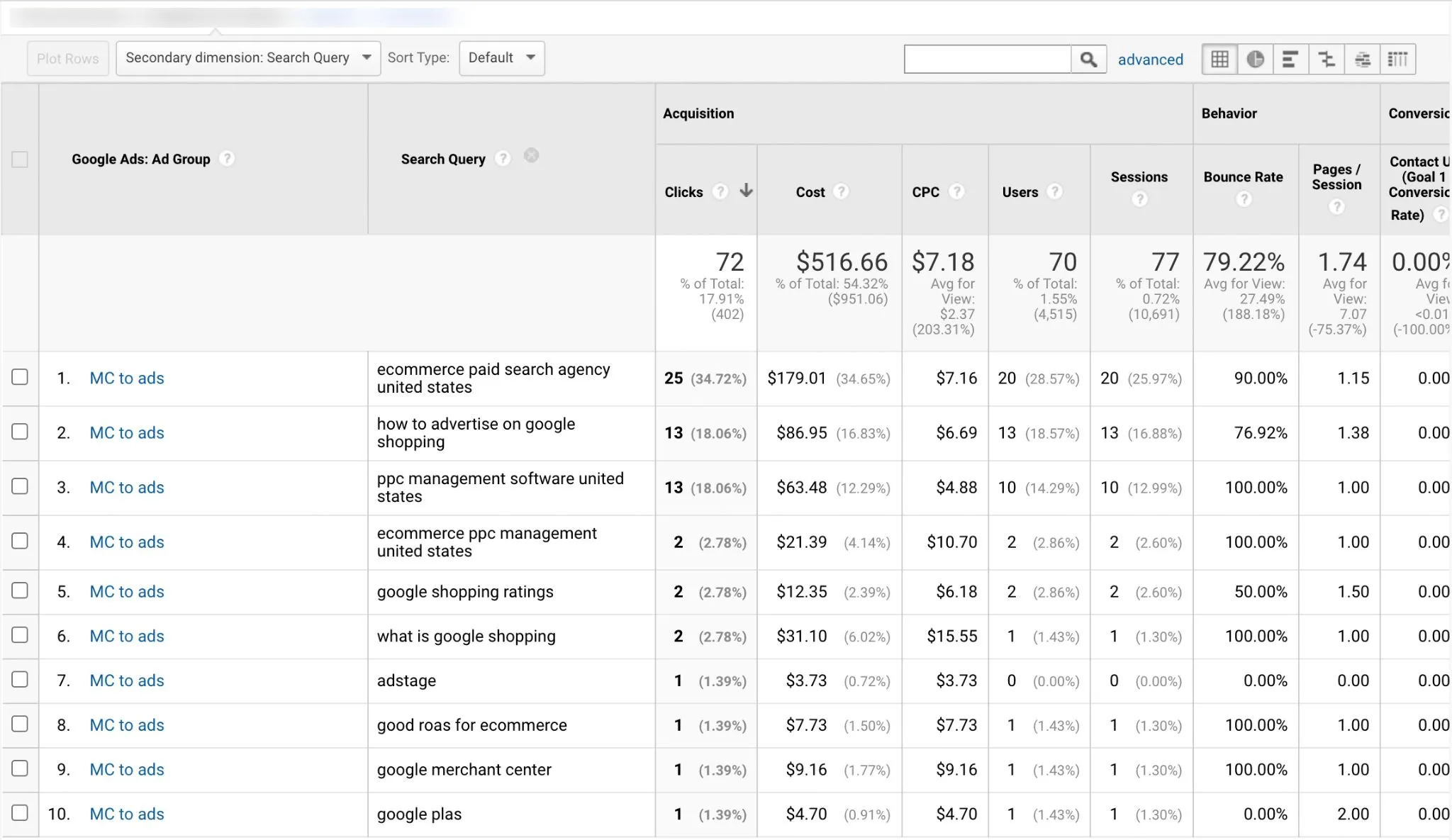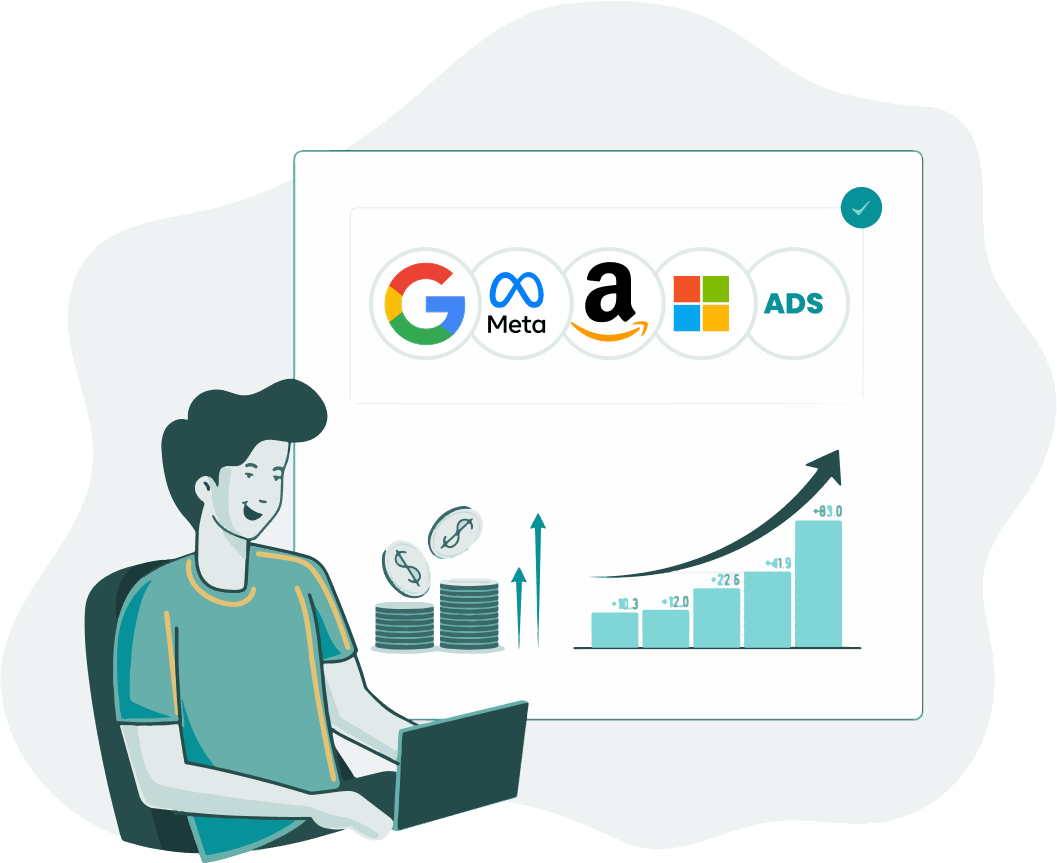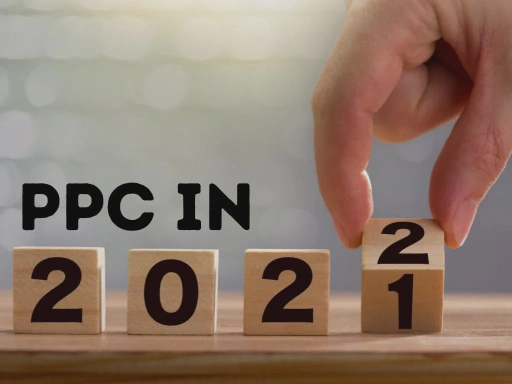Every few months, advertisers hear about the latest change or update from Google Ads, and it usually means parting ways with a degree of control: goodbye Broad Match Modifier, hidden data in the search terms report, phasing out third-party cookies, etc.
Each new update takes the PPC world a step closer to completely automated ad platforms. But a step closer towards automation can also mean reduced control over advertising and fewer insights.
It’s been almost a year since Google Ads announced to advertisers that the search terms report would only include terms that are searched for by a “significant” number of users.
In an article published soon after Google’s announcement, Matthew Umbro of Brainlabs included findings that indicated the extent to which clicks were omitted after the revision. The percentages have been much higher for other accounts since, driving up costs significantly.

Like many other Google decisions to hide data in the past, the notice was backed by reasons of improving privacy standards and protecting user data. But how hiding low-volume queries serve that purpose is not an answer we have yet.
While many PPC agencies and account managers have expressed concerns over the effect of this change, it’s also important that we look for possible solutions. At this point, Google’s tendency to increase automation and reduce data access shouldn’t be a surprise.
Solutions to work around hidden data on Google Ads
Not being able to identify all the search terms that your ads showed on – and not knowing how Google is matching queries to keywords – makes for a bit of a “black box” situation. You might see changes to your budget or impression share, but have limited insight into how to fix it.
While there are no foolproof, permanent solutions to the problems that stem from restricted performance data, there are a few things that might help lessen their effects.
1. See search terms data in Google Analytics
For now, Google Analytics provides somewhat of a temporary workaround to potentially view hidden search terms data. To find that information, visit this path:
Acquisitions > Google Ads > Campaigns > Secondary Dimension: Search Query

What you’ll see is all of your search query data for a campaign, excluding the (not provided) tag. For now, you’ll need to manually compare this list against the ones in your Search Terms Report, in order to identify anything not visible in Google Ads.
2. Optmyzr Solutions
Third-party tools like Optmyzr can help you not just identify sources of new traffic that Google Ads might not show you, but take steps to reduce or amplify their impact once you know whether they’re good or bad. Some of the things you can do are:
- Optimize search queries by filtering out irrelevant traffic, pause low-converting keywords, and adding expensive keywords as negatives.
- Monitor drastic changes in performance at the search query level. The New and Declining Search Queries strategy in our Rule Engine lets you find search terms that are new, declining, trending, and losing impressions.
- Find search terms with impressions in the last 7 days but no impressions in the 7 days before that. Great for identifying spikes of new traffic, with or without clicks.
What increased automation means for PPC managers
It’s not news that Google Ads is moving towards a more automated way of doing things. Over the past few years, Google’s machine learning algorithms have improved significantly and taken over several manual PPC tasks. While this means reduced control over some parts of PPC, it also reduces the amount of time that marketers need to spend on manual optimizations.
It’s important to look at the big picture; the long-term benefits that automation can bring (when done right) increase efficiency, save time, and lead to more profitable advertising.
And apart from tackling the day-to-day issues involved with campaign management, PPC automation also seeks to reinvent how we approach the larger marketing picture.
While some advertisers look primarily for a lift in indicative metrics, the future will demand a more audience-centric approach in order to succeed. Advertisers would do well to pay more attention to things like account structure, lead quality, and stronger creative/copy to build a better customer experience.
Conclusion
Automation in paid search is inevitable, and this trend has only been accelerated by the challenges presented by prevailing global conditions. Advertisers and PPC managers would do well to start determining what this means for their teams and strategize accordingly.
Fortunately for PPC advertisers, there may be some hope on the horizon if this message from Google Ads community liaison Ginny Marvin pans out soon:
The team is exploring ways to share more data in Search Terms Reports while remaining privacy safe. I’ll have more to share in the coming weeks.
— AdsLiaison (@adsliaison) August 5, 2021
In the meantime, remember that performance metrics are important to learn whether your optimizations are working. But building a more holistic approach alongside that effort will put you ahead of your competitors. Some key points to remember are:
- Identify your business goals and align the same with your marketing efforts.
- Focus on full-funnel metrics that may or may not be in an ads interface (like Customer Lifetime Value), not just KPIs that look good on paper
- Finally, building well-structured accounts with well-researched ad campaigns and keywords is more important than ever.









